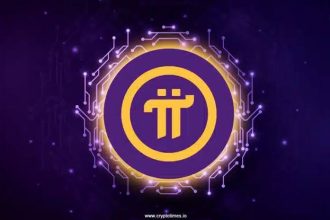Pi Network, a promising blockchain project aiming to create a decentralized and inclusive digital currency, has been gaining significant attention since its inception. As the network approaches the crucial milestone of launching its open Mainnet, the Pi Network Core Team faces important tasks and considerations to ensure a successful transition. This article explores key priorities that the team must address before the Mainnet launch to ensure a robust and secure network.
1. Rigorous Testing and Bug Fixing
One of the primary responsibilities of the Pi Network Core Team is to conduct comprehensive testing of the Mainnet. Thorough testing is vital to identify and address any potential bugs or vulnerabilities within the network. By simulating various scenarios and stress-testing the system, the team can validate the integrity and stability of the network. This process should include both internal testing by the development team and external testing by a group of skilled and diverse users to gain valuable insights and identify potential issues.
2. Security Audits and Penetration Testing
Given the sensitive nature of digital currencies, security is paramount. The Core Team must engage reputable third-party security auditors to perform extensive audits and penetration tests. These experts will scrutinize the network’s codebase, infrastructure, smart contracts, and security mechanisms to identify any vulnerabilities that malicious actors could exploit. Addressing these vulnerabilities prior to the Mainnet launch is essential to protect user funds and maintain the integrity of the Pi Network.
3. Scalability and Performance Optimization
To ensure a smooth and efficient Mainnet launch, the Core Team should focus on optimizing the network’s scalability and performance. As Pi Network aims to attract millions of users worldwide, it must be capable of handling a high volume of transactions while maintaining low latency and fast confirmations. The team should assess the network’s infrastructure, consensus algorithm, and protocol design to identify potential bottlenecks and improve efficiency. Scaling solutions, such as sharding or layer-two protocols, should be considered to enhance the network’s capacity and throughput.
4. Community Engagement and Education
Building a vibrant and engaged community is crucial for the success of any blockchain project. Before the Mainnet launch, the Core Team should intensify efforts to educate and empower the Pi Network community. Clear and accessible documentation, tutorials, and user-friendly interfaces should be provided to onboard new users and facilitate a seamless transition to the Mainnet. Regular updates, community Q&A sessions, and support channels will foster trust and enable users to fully understand the benefits and responsibilities associated with the Pi Network ecosystem.
5. Regulatory Compliance
As the crypto industry continues to evolve, regulatory compliance is becoming increasingly important. The Core Team must navigate the legal landscape and ensure that the Pi Network complies with relevant laws and regulations in the jurisdictions it operates. Collaborating with legal experts and advisors can help identify any potential compliance gaps and mitigate risks associated with regulatory non-compliance. Establishing strong relationships with regulatory bodies will not only ensure the longevity of the project but also provide a secure and trustworthy environment for users.
The Pi Network Core Team shoulders significant responsibilities as they prepare to launch the open Mainnet. Through rigorous testing, robust security measures, performance optimization, community engagement, and regulatory compliance, the team can establish a strong foundation for the Pi Network’s success. By addressing these priorities before the Mainnet launch, the Core Team will not only inspire confidence in the project but also foster a thriving ecosystem where users can transact securely and participate in the advancement of decentralized finance.












I am sending you 1π! Pi is a new digital currency developed by Stanford PhDs, with over 47 million members worldwide. To claim your Pi, follow this link https://minepi.com/daiv101 and use my username (daiv101) as your invitation code.